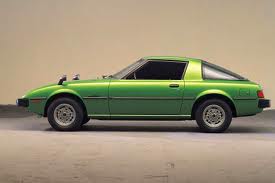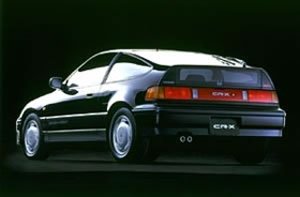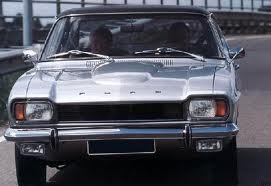


This edition of the Aston-Martin DB2 2.6L is the 4 speed / Manual version and was first brought out in 1950. This was at around the same time as the introduction of the 1951 Jaguar C Type 3.4L and the 1950 Ferrari 195 Inter.This particular Aston-Martin DB2 has a 2580cc Naturally Aspirated Petrol powerplant with 6 cylinders in a St formation.
The DB2 shares its Petrol St6 engine configuration with the likes of the 1965 Aston-Martin DB6 1965 and the . If you're looking for other fast cars which share the DB2's Rear Wheel Drive, Cabriolet combination then how about the 1982 Fiat X1/9 1.5 8V or the 1965 Aston-Martin DB6 1965.
Weighing in at 1207 kgs (2660 lbs) this makes the Aston-Martin DB2 2.6L in the same weight category as the 2018 McLaren Senna 4.0 V8 Twin Turbo or the give or take 50kg.
In terms of power the 2580cc 12V St6 engine produces 105 bhp (78 kW) @ 5000 rpm similar to the 2017 Ford Fiesta 1.5 TDCi ST-Line 120 (118 bhp) or the 2013 Skoda Rapid 1.4 tsi Spaceback (120 bhp).
The Naturally Aspirated St6 throws out 125 lb-ft (169.4 Nm) @ 3100 rpm placing it with cars of similar torque performance figures such as the 2015 Mazda MX5 2.0i Roadster Coupe (148 lb-ft) or the 2013 Skoda Rapid 1.4 tsi Spaceback (148 lb-ft).
If one combines the weight with power or torque performance for the Aston-Martin DB2 you can get a better idea of it's real world performance.
![Ford Escort XR3i MK4 - [1986] image Ford Escort XR3i MK4 - [1986] image](/editionimages/874.jpg)
The 1986 Ford Escort XR3i MK4 (111.9 bhp per ton) has similar Bhp Per Ton stats as the Aston-Martin DB2.
The Aston-Martin DB2 has a Power to weight ratio of 86.9 bhp per ton and 103.5 lb-ft per ton. Bhp Per Ton figures of the 1950 DB2 competing with the 1986 Ford Escort XR3i MK4 (111.9 bhp per ton) or the 1993 Rover 200 216 GTi Coupe (111.9 bhp per ton).
If you agree with the late great Carroll Shelby then arguably an even better indicator of potential performance, Torque. Use weight as well and you end up with - Torque per ton, with the Aston-Martin DB2 generating around 103.5 lb-ft per ton. If you're curious as to what other cars have as much torque to weight then look no further than the 1979 Peugeot 505 2.2 GTi Turbo (128.5 lb-ft per ton) or the 2006 Renault Clio 2.0 16V 197bhp (128.2 lb-ft per ton).
With a 0-60mph time of 12.40 secs or a 0-100km/h (0-62mph) of 12.8 secs, this made the Aston-Martin DB2 2.6L as fast as the 1962 Lincoln Continental 7.0L V8 (12.40 secs) the 1955 Triumph TR3 2.0L Convertible (12.50 secs) the 1962 Bentley S 3 (12.60 secs) the or the 1974 Alfa-Romeo Alfasud 1.2 Sprint Ti (12.80 secs). This Aston-Martin DB2 2.6L is also faster than the 1955 Triumph TR3 2.0L Convertible (12.50 secs) the 1962 Bentley S 3 (12.60 secs) the 1974 Alfa-Romeo Alfasud 1.2 Sprint Ti (12.80 secs) the and the 1953 Austin-Healey 100 BN1 (12.80 secs).
When talking about the performance of the Aston-Martin DB2 on the drag strip it can reach a quarter mile in an estimated 18.51 secs @ 73.9 mph. Similar performance down the quarter mile can be found with the the 1989 Toyota Celica GT Four ST185 (18.43 secs), the 1960 Pontiac Bonneville 6.4L V8 (18.43 secs), and the 1960 Pontiac Bonneville 6.4L V8 (18.43 secs).
Modern performance cars are often artificially restricted to 155mph. The 1950 version of the Aston-Martin DB2 2.6L has a maximum speed of 110mph.
If maxing out your car on the AutoBahn is your thing and you're wondering what's faster than the 1950 Aston-Martin DB2 2.6L then how about the 2017 Ford Fiesta 1.5 TDCi ST-Line 120 (121 mph), the 2007 Toyota Yaris 1.8L TS (121 mph), or the 2004 Land-Rover Discovery 3 4.4 V8 (121 mph).










BMW 3 Series 340i Touring F31 LCI
Engine: Turbo Petrol | 2998cc 24v St6
Top Speed: 249.4 kph
0-100kph: 5.1 seconds



















